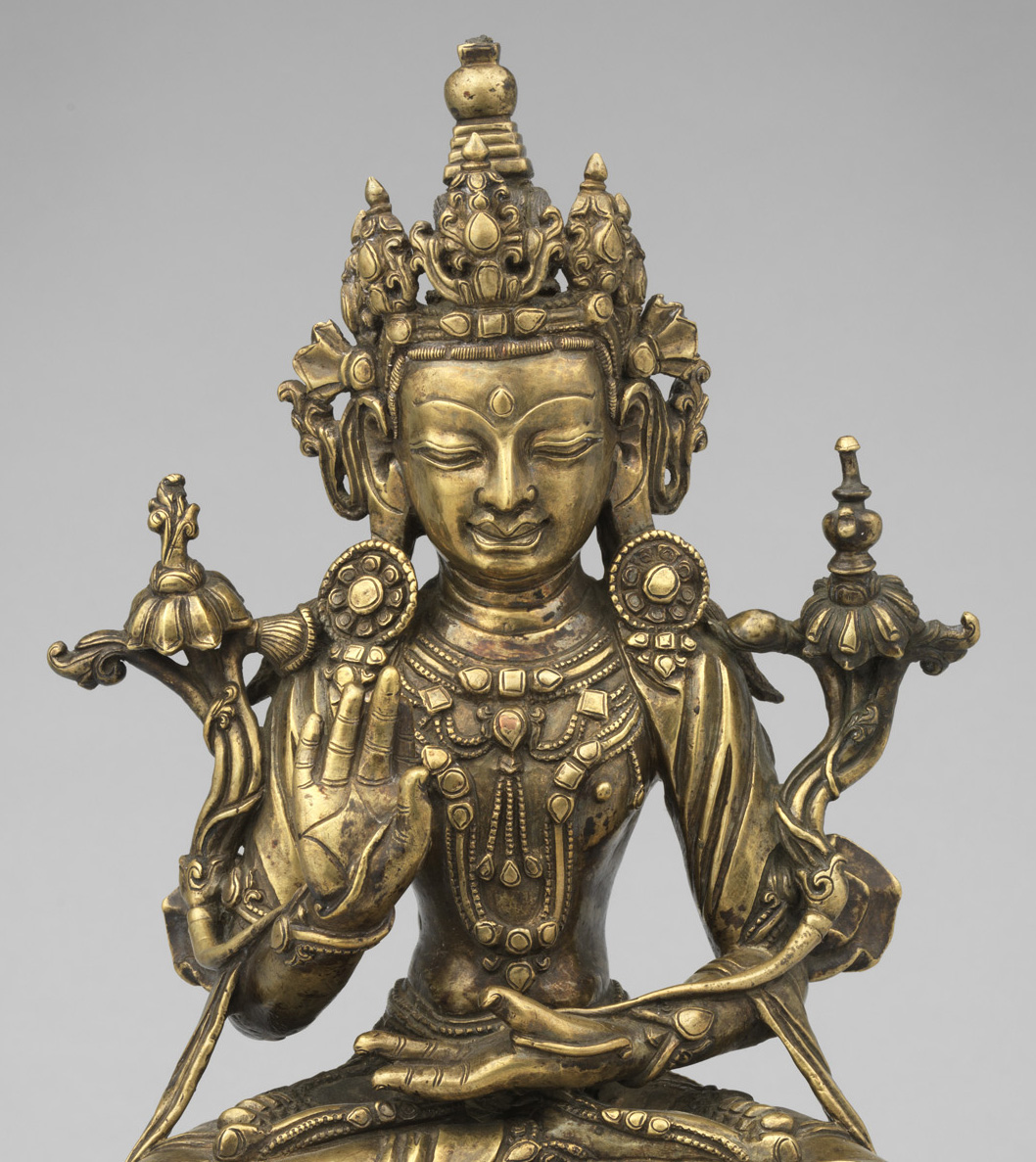Learn about the art and objects from Himalayan cultural regions and the visual language (iconography) used to convey the meanings of figures and symbols representing religious ideas and concepts.
-
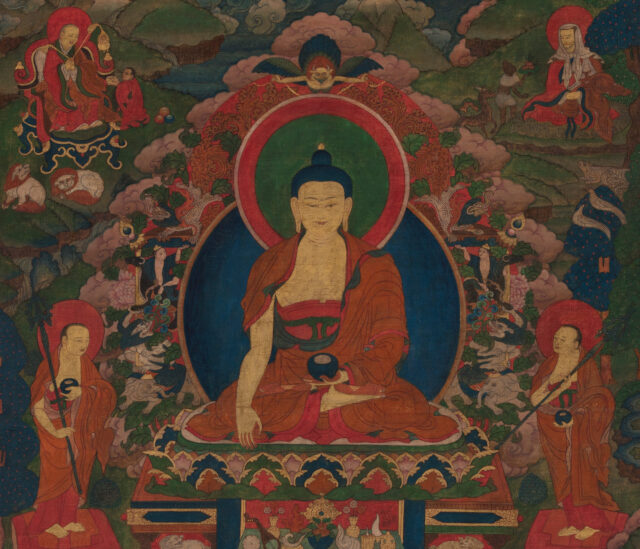 BuddhaRead more
BuddhaRead moreThe Buddha, meaning awakened person, referred first to Shakyamuni, whose teachings became the foundation of Buddhism.
-
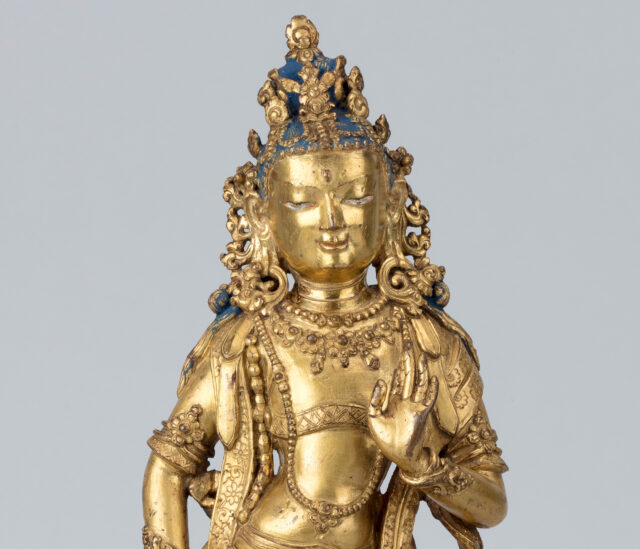 BodhisattvasRead more
BodhisattvasRead moreBodhisattvas aspire to become awakened like the Buddha and are dedicated to helping others achieve enlightenment.
-
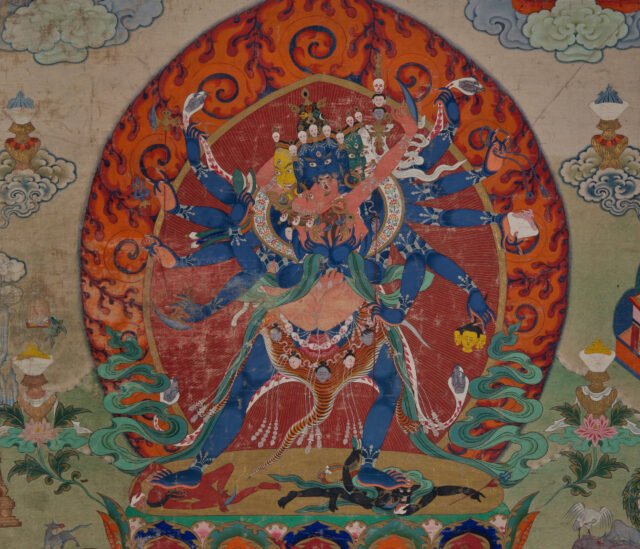 Tantric DeitiesRead more
Tantric DeitiesRead moreTantric deities are the focus of esoteric religious practices (tantras) that aim to swiftly and radically transform a practitioner’s conventional understanding of reality.
-
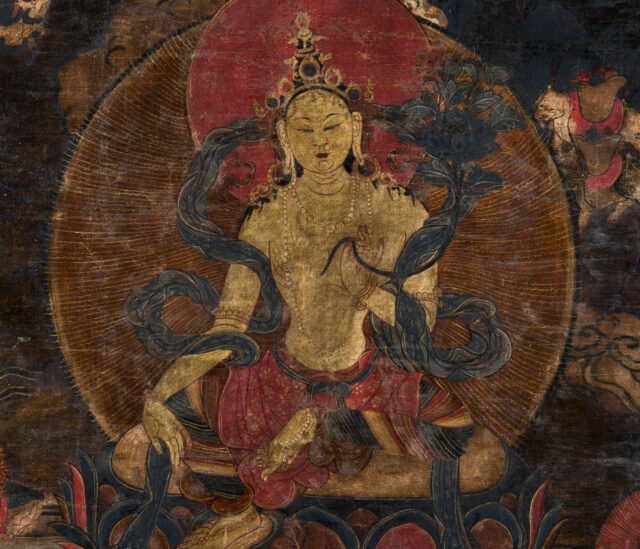 Female DeitiesRead more
Female DeitiesRead moreFemale tantric deities symbolize the wisdom aspect of the enlightened mind and and they can be peaceful or wrathful in appearance.
-
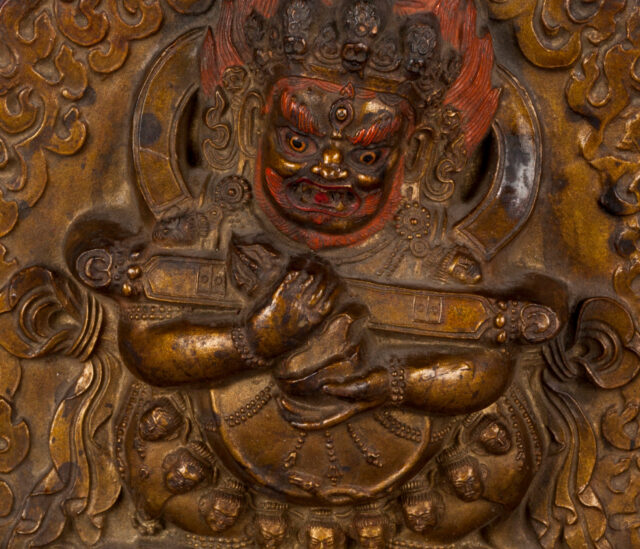 Wrathful DeitiesRead more
Wrathful DeitiesRead moreThere are two kinds of deities that appear as wrathful, with flaming hair, bulging eyes, open mouths showing fangs, and garlands of severed heads.
-
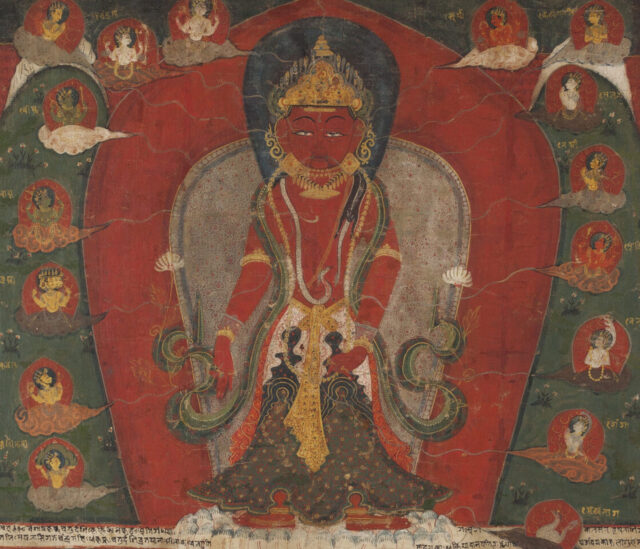 Relationship of Buddhist and Hindu DeitiesRead more
Relationship of Buddhist and Hindu DeitiesRead moreBuddhist and Hindu traditions spread side by side in the same communities in India and Nepal, and some of the deities in the two religions are associated with similar myths.
-
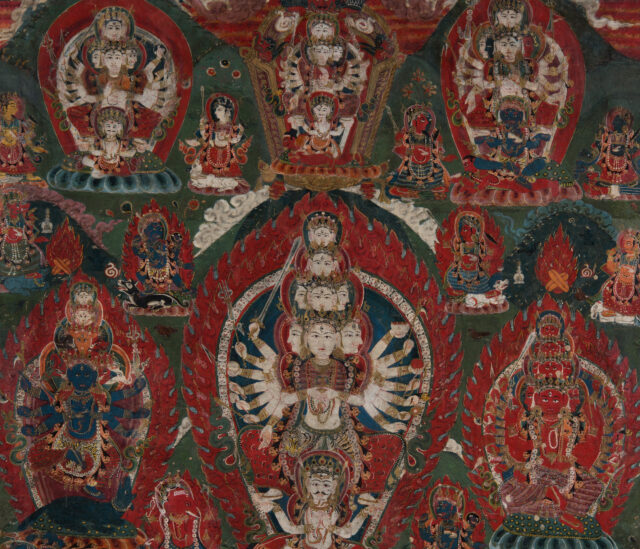 Hindu Gods and GoddessesRead more
Hindu Gods and GoddessesRead moreVarious religious practices now collectively called Hinduism worship a diverse group of gods (deva) and goddesses (devi).
-
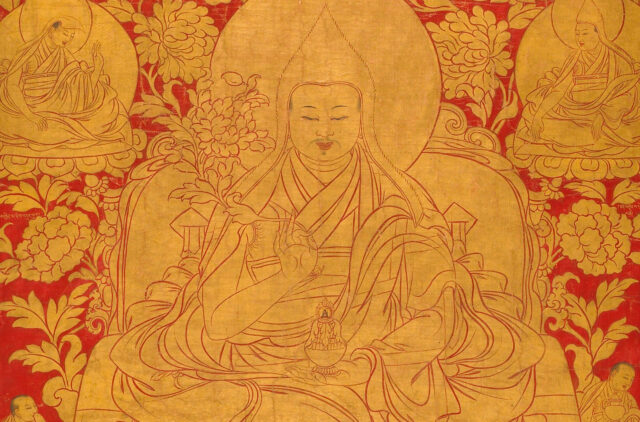 HumansRead more
HumansRead moreLegendary and historical humans, including teachers and accomplished masters, are a popular subject of Himalayan art.
